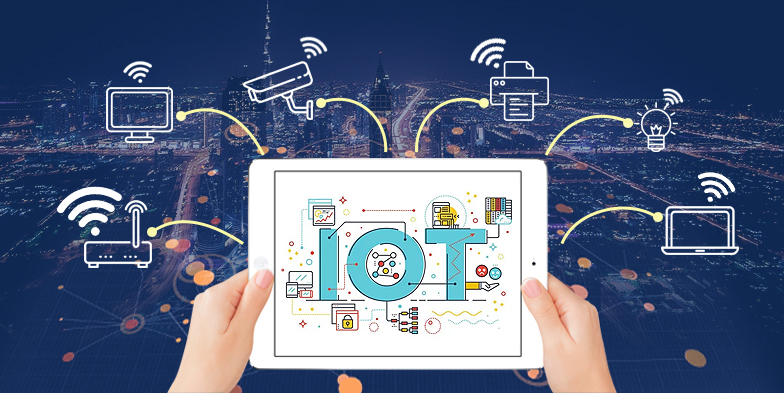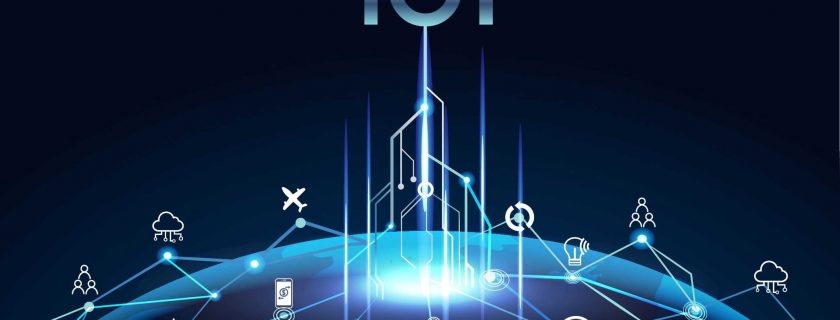In today’s rapidly evolving technological landscape, the Internet of Things (IoT) has emerged as a transformative force, reshaping the way we live, work, and interact with the world around us. IoT is not just a buzzword; it’s a technological revolution that is changing the way we perceive and interact with everyday objects and systems. In this article, we will explore the fascinating world of IoT, its applications, challenges, and the future it promises.
What is the Internet of Things (IoT)?
The Internet of Things (IoT) refers to the network of physical objects or “things” embedded with sensors, software, and other technologies that enable them to collect and exchange data with other connected devices and systems over the internet. These “things” can range from everyday household items like refrigerators and thermostats to complex industrial machines and even wearable devices like smartwatches.

How Does IoT Work?
At the core of IoT is the seamless connectivity between devices and the cloud. Devices collect data through sensors and send it to the cloud, where it is processed, analyzed, and made available for users to access. This connectivity allows for real-time monitoring, control, and automation of various systems and processes.
Applications of IoT
IoT has found applications in almost every aspect of our lives, making it a ubiquitous and indispensable technology. Here are some key areas where IoT is making a significant impact:
- Smart Homes: IoT-enabled devices like thermostats, security cameras, and voice assistants allow homeowners to control and monitor their homes remotely, enhancing convenience, energy efficiency, and security.
- Healthcare: Wearable devices equipped with IoT technology can monitor vital signs and transmit data to healthcare professionals, enabling remote patient monitoring and early intervention.
- Smart Cities: IoT is used to improve traffic management, reduce energy consumption, and enhance public safety through applications like smart traffic lights, waste management systems, and environmental monitoring.
- Industrial IoT (IIoT): In manufacturing and industry, IoT facilitates predictive maintenance, process optimization, and quality control through sensors and data analytics.
- Agriculture: Farmers use IoT to monitor soil conditions, automate irrigation, and track livestock, resulting in higher yields and sustainable farming practices.
- Retail: IoT enhances customer experiences through personalized shopping recommendations, inventory management, and supply chain optimization.
- Logistics and Transportation: IoT enables real-time tracking of shipments, route optimization, and vehicle maintenance in the logistics and transportation sectors.
Challenges and Concerns
Despite its immense potential, IoT faces several challenges and concerns that need to be addressed:
- Security: The more connected devices there are, the greater the potential for cybersecurity threats. Ensuring the security of IoT networks and devices is a top priority.
- Privacy: IoT devices collect vast amounts of personal data. Striking a balance between convenience and privacy protection is essential.
- Interoperability: IoT devices from different manufacturers must be able to communicate effectively with each other. Interoperability standards need to be established.
- Scalability: As the number of IoT devices grows exponentially, managing and scaling IoT networks becomes increasingly complex.
The Future of IoT
The future of IoT is bright, with ongoing innovations and advancements on the horizon. Here are some trends to watch for:
- 5G Connectivity: The rollout of 5G networks will provide faster, more reliable connectivity, enabling real-time applications and more widespread adoption of IoT.
- Edge Computing: Edge computing allows data processing to occur closer to the source, reducing latency and improving the efficiency of IoT systems.
- AI and Machine Learning Integration: IoT data, combined with artificial intelligence and machine learning, will enable predictive analytics and more intelligent automation.
- Blockchain for IoT Security: Blockchain technology may play a significant role in enhancing the security and trustworthiness of IoT networks.
- Environmental Sustainability: IoT can be leveraged to monitor and reduce environmental impact, contributing to sustainability efforts.
In conclusion, the Internet of Things is ushering in a new era of connectivity, innovation, and convenience. It has the potential to revolutionize industries, improve our daily lives, and address some of the world’s most pressing challenges. As IoT continues to evolve, it is crucial to prioritize security, privacy, and interoperability to ensure its continued success. With ongoing advancements in technology and a growing ecosystem of connected devices, the future of IoT holds immense promise.

Recent Comments